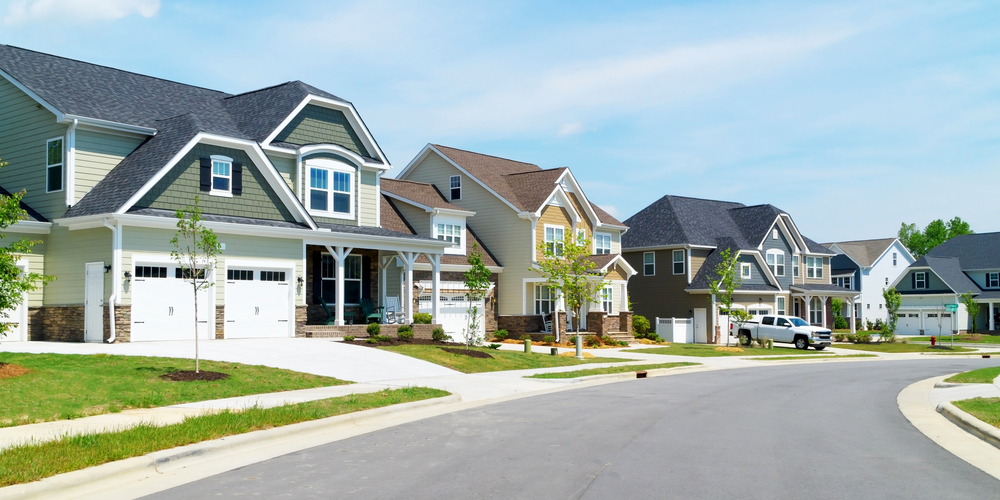First-of-Kind Study on Residential Energy Use Shows Where Efficiency – and Equity – Must Improve
Let's Save Energy
Alliance to Save Energy's Blog

The COVID-19 pandemic has placed a renewed emphasis on household energy consumption in the U.S., as loads have shifted away from the commercial building sector and into residences as a result of stay-at-home orders. One report found that the commercial sector saw a 11% decline in electricity consumption in April, while residential sales increased 8% – placing additional strain on utility customers who may already be facing financial hardships due to the pandemic.
Just in time for this conversation, in the first peer-reviewed study of its size, the authors of “The Carbon Footprint of Household Energy Use in the United States," (published recently in the Proceedings of the National Academy of Sciences) took a comprehensive look at greenhouse gas emissions from residential energy use in the U.S. The authors found that without policy-driven efforts to decarbonize the electric grid and increase the rate of deep energy retrofits in U.S. homes, the residential sector will not meet emissions reduction goals set under the Paris Accord.
Using data from 93 million individual homes, the authors identified individual energy consumption, overlaid that with the carbon intensity of the local electricity mix, and then further refined data at the zip code level to correlate energy and emissions with wealth. The topline was unsurprising: affluence is correlated with emissions. The carbon footprint of wealthier Americans is approximately 25% higher than lower-income residents, primarily due to larger homes with taller ceilings and increased floorspace.
Additionally, despite the bulk power grid reducing its emissions by 17% from 2005 to 2015, largely from switching from coal to natural gas and the addition of renewable resources such as wind and solar, population growth will make it difficult to continue on this trajectory and reach the Paris Accord goal of reducing greenhouse gas emissions 80% by 2050 from a 2005 baseline. The upshot: We must decarbonize on both the production and consumption sides of the grid.
On the production side, authors recommend decarbonizing the electric grid through further fuel switching (from coal to natural gas, increased use of renewables, and more cogeneration) and on-site low-carbon energy supply (rooftop PV, solar hot water, and energy storage). On the consumption side, energy efficiency measures to reduce demand such as through deep energy retrofits are the prescription.
“Results suggest two practical interventions to mitigate GHGs from residential energy: 1) reducing fossil use in homes and in electricity generation (decarbonization) and 2) using home retrofits to cut energy demand and in-home fuel use.”
While modern model building energy codes, which are developed at the federal level via a robust public stakeholder process but voluntarily adopted and implemented at the state and local level, have helped newer homes significantly reduce energy consumption compared to counterparts of a generation ago, the benefits of reduced energy consumption are not enough to counteract the larger size of affluent homes, and the carbon-intensive grids that exist in much of the nation, particularly powering suburbs. This means that in addition to an aggressive drive to increase the amount of deep energy retrofits in homes nationally, new homes must be designed with emissions considerations at the fore, or risk decades of carbon lock-in.
“New homes need energy saving…and low-energy heating and cooling technologies, as well as on-site low carbon energy sources wherever possible.”
While energy efficiency has often struggled with barriers, such as the upfront need for capital, the authors suggest that the correlation between affluence and emissions may indicate an ability to pay for the needed energy upgrades to tame emissions.
However, the authors note, in low-income neighborhoods where the technical potential is high, there remain 25 million households that must choose to “heat or eat.” In these communities, authors recommend looking at subsidies or carbon pricing options to fund low-income energy retrofits to overcome the “misalignment between tenant and owner interests [that] hinders energy renovations.”
The report serves as a reminder that as we take a renewed look at residential energy consumption, we must examine the sustainability of both demand and supply and make significant energy efficiency investments to reduce consumption. Only then, and with equity considerations at the forefront, can we hope to meet our emission reduction goals.
STAY EMPOWERED
Help the Alliance advocate for policies to use energy more efficiently – supporting job creation, reduced emissions, and lower costs. Contact your member of Congress.
Energy efficiency is smart, nonpartisan, and practical. So are we. Our strength comes from an unparalleled group of Alliance Associates working collaboratively under the Alliance umbrella to pave the way for energy efficiency gains.
The power of efficiency is in your hands. Supporting the Alliance means supporting a vision for using energy more productively to achieve economic growth, a cleaner environment, and greater energy security, affordability, and reliability.



